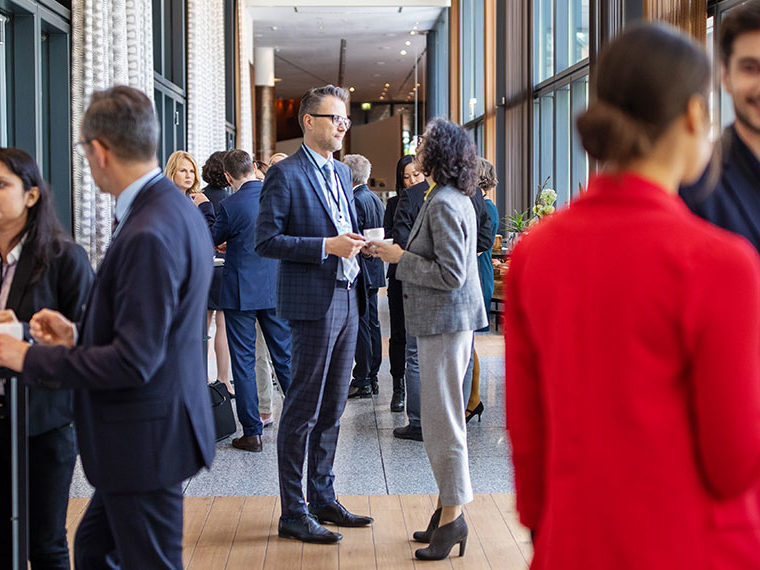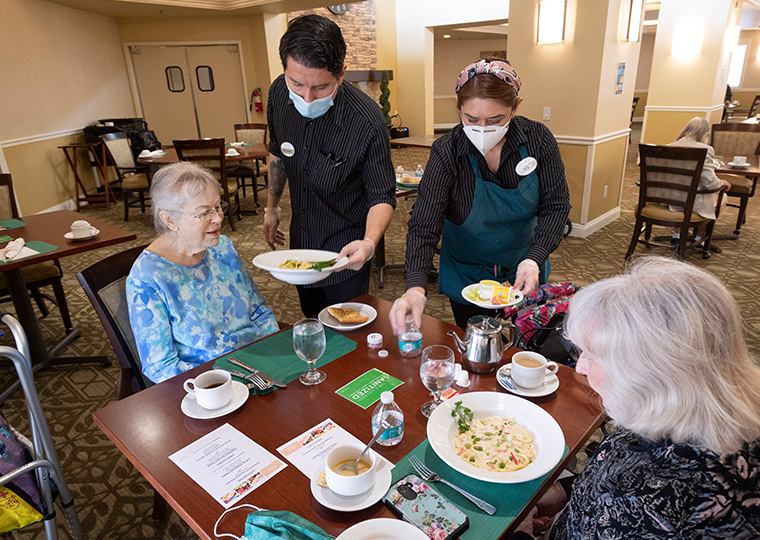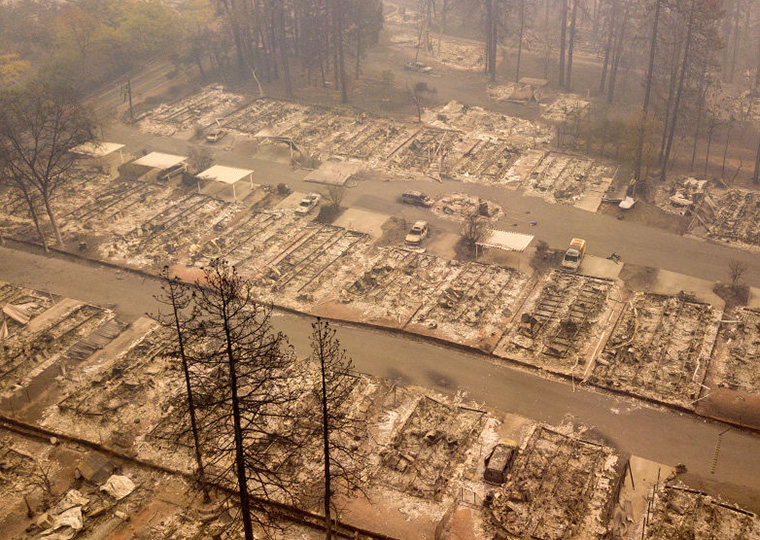Reliable, widespread testing regimen could help jump-start economy
A nationwide COVID-19 screening program that includes quick verification of positive test results would provide economic benefits far beyond its considerable costs, according to new research out of UCLA and Harvard. A two-test protocol could spur economic recovery by greatly reducing the number of people and businesses sidelined by COVID-19–related fears and unnecessary quarantines, as well as lowering actual sickness and death rates.
The study analyzes three hypothetical protocols for federally funded screening programs that test large swaths of the mostly asymptomatic population every 4, 7, 14 or 30 days. Any one of the scenarios would induce GDP growth that generates more than enough additional tax revenue to pay for the testing costs, according to findings detailed in a working paper by UCLA’s Andrew Atkeson and Harvard’s Michael C. Droste, Michael Mina and James H. Stock.
All of the protocols avert hundreds of thousands more illnesses, and prevent resulting deaths, than the nation’s current testing strategies, and they could keep most schools open, according to the study model. These effects are not calculated in the fiscal returns. A weekly screening schedule, for example, produces economic benefits that exceed cost by a factor of 5-to-10, not counting the monetized value of lives saved or continued on-site schooling.
Opt In to the Review Monthly Email Update.
News of three highly effective vaccines in recent days has shifted much attention away from testing and toward eventual control of the virus. But that potential breakthrough is months away at best; meanwhile, the virus is raging across much of the country and threatening to worsen the economic downturn. No vaccine has cleared regulatory hurdles or gone into mass production, and the distribution network for inoculating the public is still unclear. Realistically, it will be months before a vaccine is readily available. Screening programs could allow more normalcy until then.
One sample scenario from the study administers $5 rapid antigen tests and follows every positive result with a $50 PCR test. Although the rapid tests give results within minutes, they are much more likely to give false positives. The more accurate PCR tests require labs and are often turned around in a couple of days. With the paired tests, quarantine times on false positives could be shortened by at least 10 days, the findings suggest.
Two cheaper, but also populationwide, screening regimes also generate more revenue for the U.S. Treasury than they cost, the study finds. One follows only half of all positive $5 rapid tests with PCR tests. Another pairs a less reliable $2 antigen test with a $5 antigen test on positives, resulting in near-definitive results in two days. They lead to lower federal receipts than the first scenario due to less quarantine adherence and the necessity of following up on more false positives.
The huge scale of these regimes is far beyond anything the U.S. federal government has tried in its halting efforts to control COVID-19’s spread. Currently, disparate screening programs are run by states, businesses, local authorities and private entities, with varying degrees of coverage and frequency and little coordination of protocols and results.
While the working paper doesn’t detail how to roll out such a program, there are potential models. Mina and Laurence J. Kotlikoff of Boston University have long proposed giving all households rapid COVID-19 tests that individuals could self-administer and report results. In an interview, Atkeson points to ongoing mass screening projects in Slovakia and Liverpool, England, with promising results. Austria recently announced it will test all its residents in December.
The screening regimes the study modeled would be similar or larger in scale than the U.S. Census project, Atkeson says. He notes that the government has regularly run that project for decades, including hiring thousands of temporary workers that often go door to door.
Populationwide COVID-19 screening would be a massive undertaking. “But it’s not a pie in the sky idea,” he says.
The Price of Fear
The U.S. economy has not recovered from the initial COVID-19 hit in the spring when authorities issued lockdown orders in most of the country. Economic activity — in-store shopping, spending at restaurants, travel, manufacturing output, business-to-business transactions and other tax-generating activities — has remained depressed, even in months when infection rates were low and few restrictions remained.
Despite widespread belief that this ongoing economic sluggishness is due to official restrictions imposed because of high rates of infection, this is not what the experts think, Atkeson explains.
“There is a reduction in (economic) output just from people getting sick and dying, but that’s not so large,” Atkeson explains. Rather, he says, most of the economic damage comes from fear of getting or spreading the virus. “The main force that most economists think is driving the downturn is behavior,” he says. “Just out of fear people don’t do stuff,” like travel and eat at restaurants. That adds up to a substantial reduction in GDP. The same fears lead authorities to enact orders that prevent even noninfectious people, as well as uninfected businesses, from tax-generating activities.
Of course, fear of catching COVID-19 is justifiable. U.S. infection rates are higher than ever, and deaths are rising sharply. It’s now clear that many people with no symptoms at all are spreading the virus too, and efforts to identify and isolate them are limited. The relatively few workplaces and schools that frequently screen asymptomatic populations often rely solely on cheaper rapid antigen tests, which are notorious for false positives.
Current screening programs often instruct individuals testing positive to self-isolate for 10 to 14 days, rather than offer a second test that might free them sooner. But both quarantine compliance on false positives and quarantine defiance on accurate results drag down GDP.
“The problem with false positives is you’re telling a whole bunch of people to isolate even though they don’t have disease,” Atkeson explains. “If you get enough of that, it’s almost like a lockdown.”
Research suggests very low compliance generally with individual quarantine orders. A large study in the U.K. found that less than 18% of individuals with COVID-19 symptoms between March and August self-isolated. Among those told by the National Health Service that they had been in close contact with a confirmed case, almost 90% broke quarantine. No one wants to quarantine for 10-plus days, especially the asymptomatic and the truly uninfected.
Most people with a positive result on a rapid test, however, are infectious. Their continued interactions raise infection rates to levels that scare off consumers and workers.
To keep the economy running safely and optimally, the screening regime has to do more than just reduce the spread of the disease, Atkeson continues. It has to convince the public that most infections are being quickly identified and isolated — and give reliable warning when the risks are high. Providing that confidence, he says, has a bigger impact on GDP than fewer people getting sick does.
Scaling It Back
In the study model, the accuracy rates of the tests is a large factor in both costs and disease spread. Screening costs fluctuate with the test’s so-called specificity, which is an indication of its propensity for false positives. The regime including less reliable $2 rapid tests requires more follow-up testing than one that starts with a $5 antigen, but the two-stage testing produces higher specificity in each of the three populationwide scenarios. Quick, reliable results lead to higher adherence to quarantine instructions, which helps reduce disease spread.
For optimal economic benefits, initial screening should be very frequent and cover most of the population. But it could be scaled back somewhat when or where infection rates drop, Atkeson says.
The researchers also considered a scenario that limits screening to targeted age groups. It finds that testing young adults (ages 20 to 44) saves the most lives and offers the highest fiscal returns, largely because it breaks the cycle of asymptomatic younger people transmitting the virus to more vulnerable older people. Testing only 45- to 64-year-olds also produces net benefits, probably because it reduces transmission from caregivers to the elderly. However, such limited screening does not help keep schools open.
The study did not calculate health and fiscal returns with a program that limits blanketed screening to large group settings, such as schools and workplaces.
However, Atkeson notes promising results from a University of Illinois at Champaign-Urbana program that screens all of its faculty, staff and students as often as twice a week — a regime that results in some 17,000 tests on some days. The university’s experience offers a wealth of data and advice for other institutions considering the same. Screening rates nationwide might be ramped up more quickly this way than individually targeting the general population for tests.
Several COVID-19–related factors that weigh heavily on the population and the economy were not considered in the study’s cost-benefit analysis. For example, more than half of U.S. workers are hourly wage earners, and their decisions to break quarantine may be more related to their own finances than test results. Many of them do not get paid if they don’t show for work, even if they have COVID-19 and are contagious.
Government costs to Medicaid and Medicare will be lower if infection rates decline, but this potential savings is not included in the model. Neither are the effects of contact tracing, which would reduce infection rates further but raise costs. Keeping schools open and kids attending also has psychological benefits beyond what the model could consider.
Featured Faculty
-
Andrew G. Atkeson
Stanley M. Zimmerman Professor of Economics and Finance
About the Research
Atkeson, A., Droste, M.C., Mina, M. and Stock, J.H. (October 2020) Economic Benefits of Covid-19 Screening Tests.






